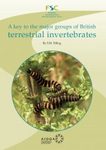![Copepoda: Calanoida Copepoda: Calanoida]()
Click to have a closer look
About this book
Customer reviews
Related titles
About this book
The Paradiaptominae, a subfamily of the large Diaptomidae family, are a small group of freshwater calanoids. They are endemic to Africa with the exception of four species, Metadiaptomus asiaticus (Asia, Mongolia), M. gauthieri (Madagascar), Paradiaptomus greeni (India and Sri Lanka), Neolovenula alluaudi (Canary Islands, Baltic and Mediterranean countries). As a group, the paradiaptomids are widely distributed in semi-permanent water bodies in the drier areas of Africa ahhough most species have a restricted distribution. Only a few species have the ability to colonise permanent waters and these are usually located at higher altitudes. Paradiaptomids are not found in the wet equatorial lowland areas of Africa.
Poor taxonomic knowledge has contributed to lack of interpretation of copepod distribution as emphasised by Dumont (1980). With the exception of the three new species of Paradiaptomus described by Rayner (1999), all species of the Paradiaptominae (except P. rex) were described more than 50 years ago. Their taxonomic characters are very clearly defined and even the smallest variability in morphology almost certainly indicates that there is a second species involved. This fact has caused confusion in the taxonomy of the Paradiaptominae and has resulted in some serious errors and misidentifications.
Reference material was collected from various museums, scientific institutes and individuals. A reference collection of approximately 250 microscope slides and numerous wet specimens, was prepared. All measurements are in millimetres, exclude furcal setae, and have been compiled from material examined, unless otherwise stated. The number of specimens measured varied, depending on the material available. Total length of individuals was a reliable measure for inter-specific comparisons, as well as comparisons between males and females within species. Prosomal length, although a slightly more accurate measurement, yielded less information in this respect. Measurements and coloration are affected by age and period of time of preservation of the specimen. Curvature of female antennae affects measurements relative to body length. Pedigerous somite 5 wings, shape of the tip of last segment of male right antennule, and male leg 5 left exopodite may be affected by orientation on the microscope slide. The confusion in the literature, the lack of designation of type specimens and the unavailability of reference material has been an ongoing problem for copepod taxonomists. In the text, 'type locality' refers to the locality here the species was first collected, despite the fact that types were seldom designated. (The International Code of Zoological Nomenclature rules that the type locality is the locality where the name-bearing type was collected, so in some cases, the use of the term type locality is not correct).
Customer Reviews











































